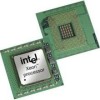Intel BX80605X3430 Data Sheet - Page 16
Description
 |
UPC - 735858210331
View all Intel BX80605X3430 manuals
Add to My Manuals
Save this manual to your list of manuals |
Page 16 highlights
Introduction Term Intel® VT-d Intel® Virtualization Technology ITPM IOV LCD LVDS NCTF PCH PECI PEG Processor Processor Core Rank SCI Storage Conditions TAC TDP TLP TOM TTM VCC VSS VTT VDDQ VLD x1 x4 x8 x16 Description Intel® Virtualization Technology (Intel® VT) for Directed I/O. Intel VT-d is a hardware assist, under system software (Virtual Machine Manager or OS) control, for enabling I/O device virtualization. VT-d also brings robust security by providing protection from errant DMAs by using DMA remapping, a key feature of Intel VT-d. Processor virtualization which when used in conjunction with Virtual Machine Monitor software enables multiple, robust independent software environments inside a single platform. Integrated Trusted Platform Module I/O Virtualization Liquid Crystal Display Low Voltage Differential Signaling. A high speed, low power data transmission standard used for display connections to LCD panels. Non-Critical to Function: NCTF locations are typically redundant ground or noncritical reserved, so the loss of the solder joint continuity at end of life conditions will not affect the overall product functionality. Platform Controller Hub. The new, 2009 chipset with centralized platform capabilities including the main I/O interfaces along with display connectivity, audio features, power management, manageability, security and storage features. Platform Environment Control Interface PCI Express* Graphics. External Graphics using PCI Express Architecture. A highspeed serial interface whose configuration is software compatible with the existing PCI specifications. The 64-bit multi-core component (package) The term "processor core" refers to Si die itself which can contain multiple execution cores. Each execution core has an instruction cache, data cache, and 256-KB L2 cache. All execution cores share the L3 cache. A unit of DRAM corresponding to four to eight devices in parallel, ignoring ECC. These devices are usually, but not always, mounted on a single side of a DIMM. System Control Interrupt. Used in ACPI protocol. A non-operational state. The processor may be installed in a platform, in a tray, or loose. Processors may be sealed in packaging or exposed to free air. Under these conditions, processor landings should not be connected to any supply voltages, have any I/Os biased or receive any clocks. Upon exposure to "free air" (that is, unsealed packaging or a device removed from packaging material), the processor must be handled in accordance with moisture sensitivity labeling (MSL) as indicated on the packaging material. Thermal Averaging Constant Thermal Design Power Transaction Layer Packet Top of Memory Time-To-Market Processor core power rail Processor ground L3 shared cache, memory controller, and processor I/O power rail DDR3 power rail Variable Length Decoding Refers to a Link or Port with one Physical Lane Refers to a Link or Port with four Physical Lanes Refers to a Link or Port with eight Physical Lanes Refers to a Link or Port with sixteen Physical Lanes 16 Datasheet, Volume 1















